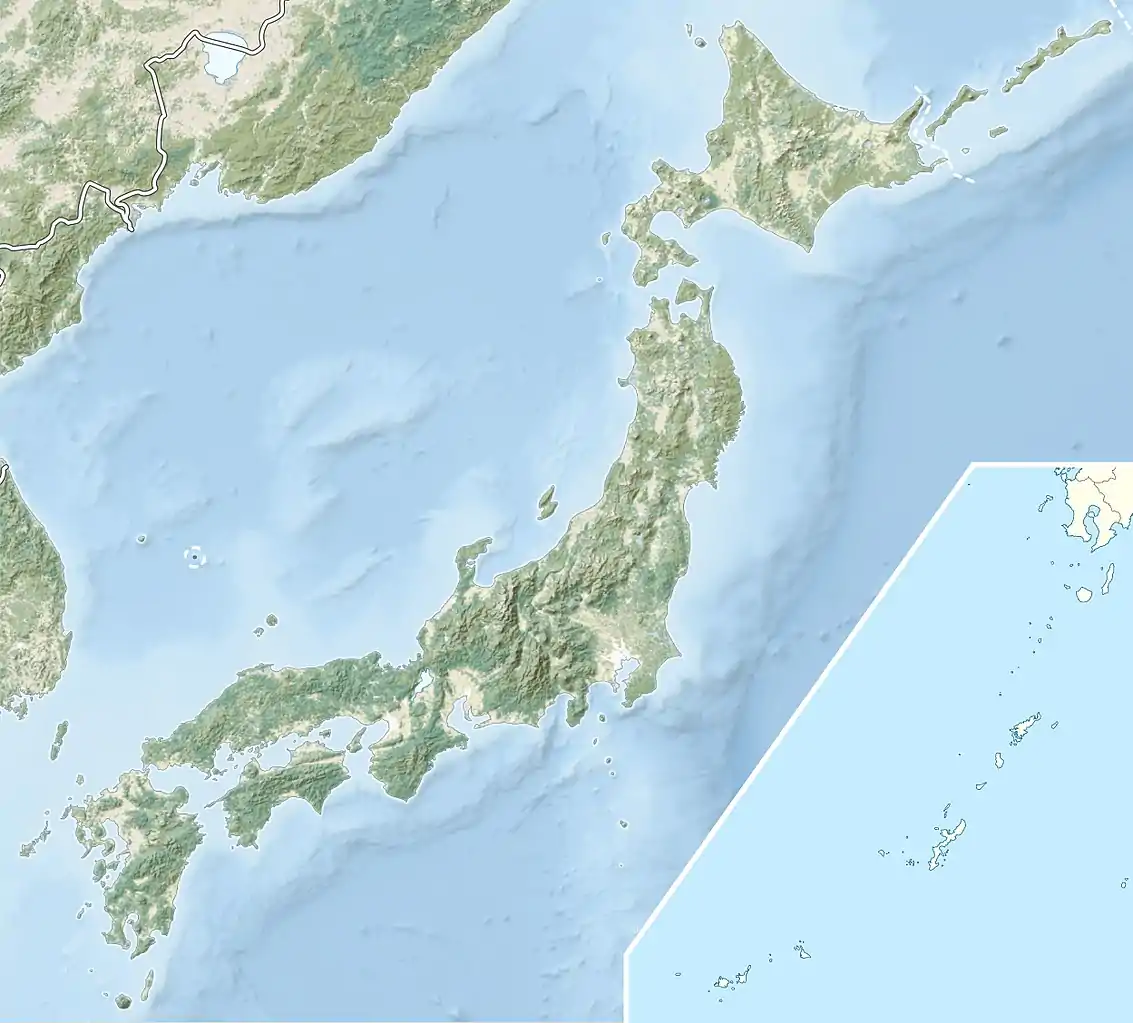Jobu Formation
The Jobu Formation is a Cretaceous geologic formation of Late Cenomanian age. Dinosaur remains are among the fossils that have been recovered from the formation, although none have yet been referred to a specific genus. The oldest confirmed tyrannosaurid premaxillary tooth was recovered from the Jobu Formation.[1] The mammal Sorlestes is also known from the formation.
| Jobu Formation Stratigraphic range: late Cenomanian ~96–94 Ma | |
|---|---|
| Type | Geological formation |
| Unit of | Mifune Group |
| Lithology | |
| Primary | Mudstone |
| Location | |
| Coordinates | 32.7°N 130.9°E |
| Approximate paleocoordinates | 44.4°N 123.5°E |
| Region | Fukui, Kumamoto |
| Country | |
 Jobu Formation (Japan) | |
Fossil content
The following fossils were reported from the formation:[2]
- Mammals
- Sorlestes mifunensis[3]
- Dinosaurs
- Turtles
- Adocus sp.[8]
- Shachemys sp.[8]
- Nanhsiungchelyidae indet.[9]
See also
- List of dinosaur-bearing rock formations
References
- Holtz, 2001
- Jobu Formation in the Paleobiology Database
- Setoguchi et al., 1999
- Tamura et al., 1991
- Carrano et al., 2012
- Chure et al., 2011
- Manabe, 1999
- Danilov et al., 2011
- Danilov & Syromyatnikova, 2008
Bibliography
- M. T. Carrano, R. B. J. Benson, and S. D. Sampson. 2012. The phylogeny of Tetanurae (Dinosauria: Theropoda). Journal of Systematic Palaeontology 10(2):211-300
- I. G. Danilov, V. B. Sukhanov, and E. V. Syromyatnikova. 2011. New Asiatic materials on turtles of the family Adocidae with a review of the adocid record in Asia. Proceedings of the Zoological Institute, Russian Academy of Sciences 315(2):101-132
- I. G. Danilov and E. V. Syromyatnikova. 2008. New materials on turtles of the family Nanhsiungchelyidae from the Cretaceous of Uzbekistan and Mongolia, with a review of the Nanhsiungchelyid record in Asia. Proceedings of the Zoological Institute RAS 312(1/2):3-25
- Holtz, T.R., Jr. 2001. The phylogeny and taxonomy of the Tyrannosauridae. pp. 64–83, in D.H. Tanke and K. Carpenter (eds.), Mesozoic Vertebrate Life: New Research Inspired by the Paleontology of Philip J. Currie. Indiana Univ. Press.
- D. J. Chure, M. Manabe, M. Tanimoto and Y. Tomida. 1999. An unusual theropod tooth from the Mifune Group (Late Cenomanian to Early Turonian), Kumamoto, Japan. In Y. Tomida, T. H. Rich, and P. Vickers-Rich (eds.), Proceedings of the Second Gondwanan Dinosaur Symposium, National Science Museum Monographs 15:291-296
- M. Manabe. 1999. The early evolution of the Tyrannosauridae in Asia. Journal of Paleontology 73(6):1176-1178
- T. Setoguchi, T. Tsubamoto, H. Hanamura and K. Hachiya. 1999. An early Late Cretaceous mammal from Japan, with reconsideration of the evolution of tribosphenic molars. Paleontological Research 3(1):18-28
- M. Tamura, Y. Okazaki, and N. Ikegami. 1991. [Occurrence of carnosaurian and herbivorous dinosaurs from upper formation of Mifune Group, Japan]. Kumamoto Daigaku Kyōiku Gakubu kiyō. Shizen kagaku 40:31-45
This article is issued from Wikipedia. The text is licensed under Creative Commons - Attribution - Sharealike. Additional terms may apply for the media files.